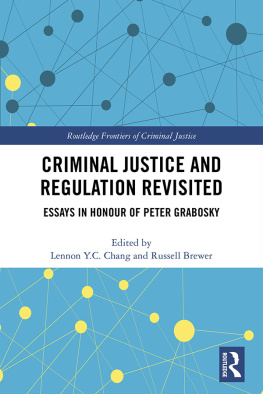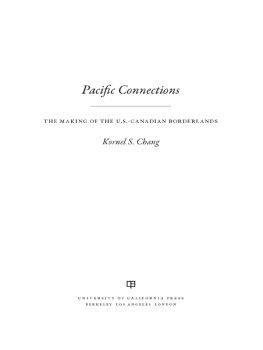
Thank you for buying this
Picador ebook.
To receive special offers, bonus content,
and info on new releases and other great reads,
sign up for our newsletters.

Or visit us online at
us.macmillan.com/newslettersignup
For email updates on the author, click here.
The author and publisher have provided this e-book to you for your personal use only. You may not make this e-book publicly available in any way. Copyright infringement is against the law. If you believe the copy of this e-book you are reading infringes on the authors copyright, please notify the publisher at: us.macmillanusa.com/piracy.
In appreciation of all the young people who would not bow down
And all of this for you is fuel
like September kiawe .
You vow to write so hard
the paper burns
We are living in serious times. Since 2012, the names of the fallenTrayvon Martin, Michael Brown, Tamir Rice, Freddie Gray, Sandra Bland, Laquan McDonald, the list never seems to ceasehave catalyzed collective outrage and grief. In the waning years of a Black presidency, we saw a proliferation of images of Black people killed in the streets and the rise of a national justice movement to affirm that Black lives matter.
Young people who grew up exemplars of post-1965 American diversity while attending schools that were dramatically resegregating have taken to the streets and the university quads to march against their own invisibility and demand a renewed attention to questions of equity.
And even the machines of our culture industries, which for the past twenty years have tried to assure us that our rainbow nation is indeed a happy one, have found their gears ground down by popular protests led by people of color against their lack of access, representation, and power.
In Who We Be , I wrote about visual culture and what I called the paradox of the post-racial momentthat while our images depict a nation moving toward desegregation, our indices reveal growing resegregation and inequity. The book was published a month before the announcement of the non-indictment of officer Darren Wilson in Ferguson, Missouri. Since then, the idea that there had ever been a post-racial moment has come to seem naive, even desperately so.
Once the embodiment of hope, Obama leaves office publicly regretting his inability to reconcile the countrys polarization. At the same time, Donald Trump focuses the anxieties loosed by white vulnerabilityan inchoate, inescapable sense that the social and economic present and future of whites will only get worseonto the bodies of migrants, Muslims, Blacks, women, and all those others who do not deserve the gift of America. Like climate change, the culture wars seem to have become an enduring feature of our daily lives, the permanent fog of a country that repeats the spectacle of fire in every generation.
Polls show that more Americans are concerned about race relations now than at any time since 1992, the year of the Los Angeles riots. The previous peak had come in 1965the year of the Voting Rights Act, the Immigration and Nationality Act, the apex of the civil rights movement, the year of the last national consensus for racial justice.
1965 was also the year of Malcolm Xs assassination and the Watts riots. It was the beginning of the postcivil rights era, an era that has been defined by a vital culture reshaped under demographic change but a politics mobilized around racial backlash. That historic arcof an explosion of cultural expression that moved us forward toward mutual recognition amidst a cascade of regressive policies, laws, and political maneuvers that pushed us backward toward inequality and resegregationwas my focus in Who We Be . Over the past two years, it seems even clearer that we as a nation are caught in a bad loop of historyfrom 1965 to 1992 to right now.
Race makes itself known in crisis, in the singular event that captures a larger pattern of abuse and pain. We react to crisis with a flurry of words and, sometimes, actions. In turn, the reaction sparks its own backlash of outrage, justification, and denial. The cycle turns next toward exhaustion, complacency, and paralysis. And before long, we find ourselves back in crisis.
Racism is not merely about individual chauvinism, prejudice, or bigotry. Ruth Gilmore reminds us that it is about the ways different groups are vulnerable to premature death, whether at the hands of the state or the structures that kill.
We know now that implicit bias, stereotype threat, and the empathy gap are real things. People harbor subconscious biases that are hard to root out but can be unlearned. Social psychologist Jennifer Eberhardt, for example, has argued that training police to see the way in which people subconsciously associate criminality with Black faces can reduce rates of racial profiling.
But the social structures that create premature death do not harm only those individuals who have the misfortune to come into contact with bigots or quick-trigger authorities who have not yet learned how to see. They also prevent people from getting adequate food, shelter, and housing. They limit physical, economic, and social mobility. They refuse to let us all be free. Over time, these structures have proven extraordinarily adaptable.
Inequity and injustice are not abstract things. They impact real people and real lives. In terms of poverty, annual income, wealth, health, housing, schooling, and incarceration, persistent gaps separate whites from Black, Latino, Southeast Asian, Pacific Islander, and American Indian populations. And in the specific case of premature deathdefined by the Centers for Disease Control and Prevention as death among persons under the age of seventy-fivethe death rate of Blacks is over 50 percent higher than that of whites, and higher than that of all other major ethnic groups, except for some American Indian cohorts.
Only a small part of this statistic is attributable to homicide and that favorite digression of conservative pundits, Black-on-Black violence. In fact, most of the reasons have to do with large disparities in access to quality food and regular and preventative health care, and with diseases such as cancer, stroke, and HIV. A shockingly large portion is the result of an African American infant mortality rate that is more than double that of white Americans, triple that of Swiss citizens, and five times that of Japanese citizens. Racism kills.
Extrajudicial police shootings have been the organizing spark of the Movement for Black Lives. But the facts of inequality and death hang over us all like a toxic haze. In the United States, segregation and resegregation happen through the disappearing of the signs of inequality. Whether through white flight, the optics of diversity, or metaphorical and actual wall building, the privileged spare themselves the sight of disparity, and foreclose the possibility of empathy and transformation.
Now this haze has blown into white America as well. More white U.S. women and men in their forties and fiftiesparticularly those with lower levels of educational attainmentare dying prematurely. This reversal of fortune for middle-aged whites is unprecedented in American history and unique among the wealthy nations. When examining the causes, researchers Anne Case and Angus Deaton found significant rises in painkiller abuse, liver disease, suicides, and drug overdoses. Future financial insecurity may weigh more heavily on U.S. workers, they wrote, calling middle-aged whites a lost generation whose future is less bright than those who preceded them. At the height of the Reagan-Bush era the writer Barbara Ehrenreich named this condition: whites, whose once solid destinies were melting into air, harbor a deep fear of falling. That tumble is now all too real.
Next page










